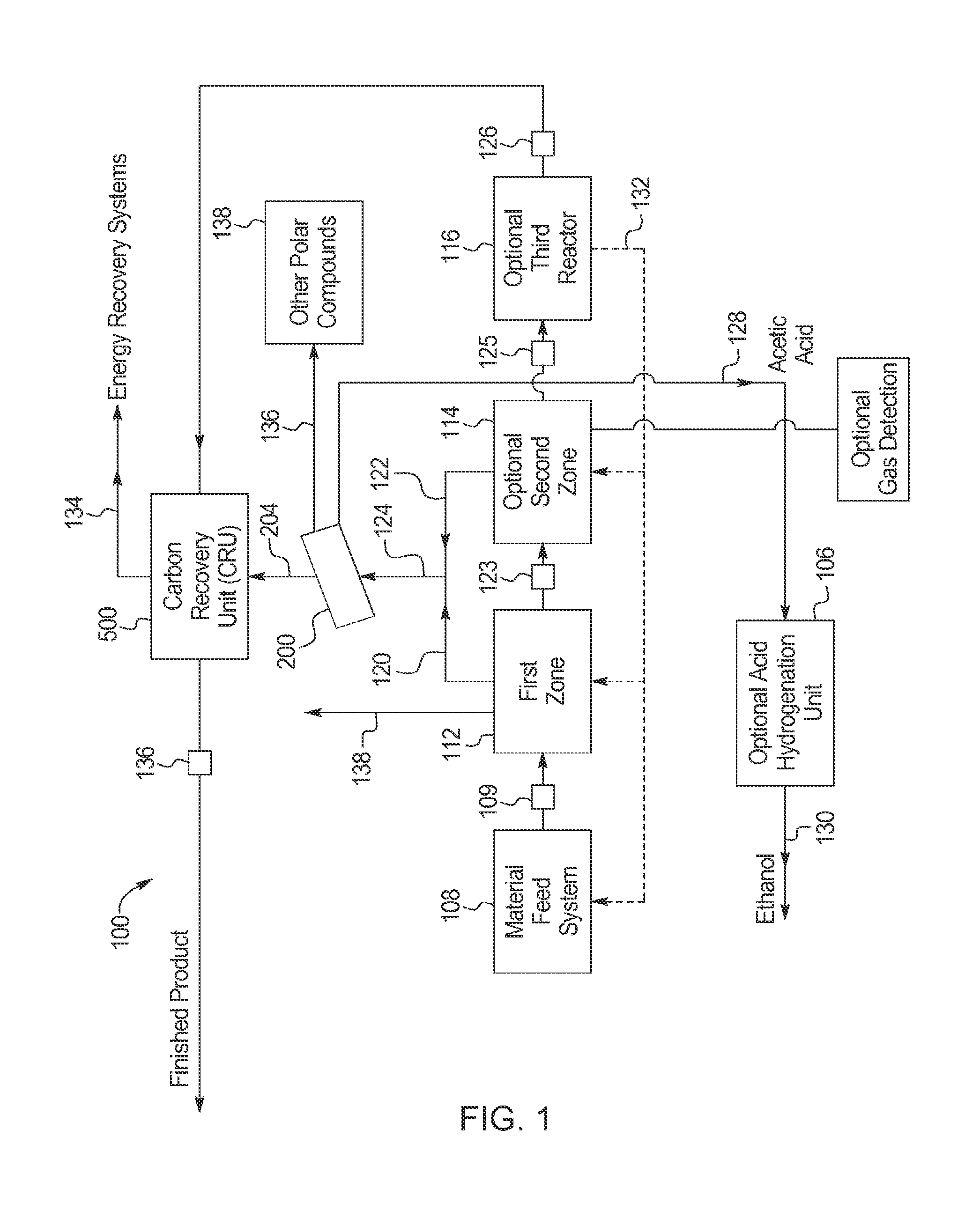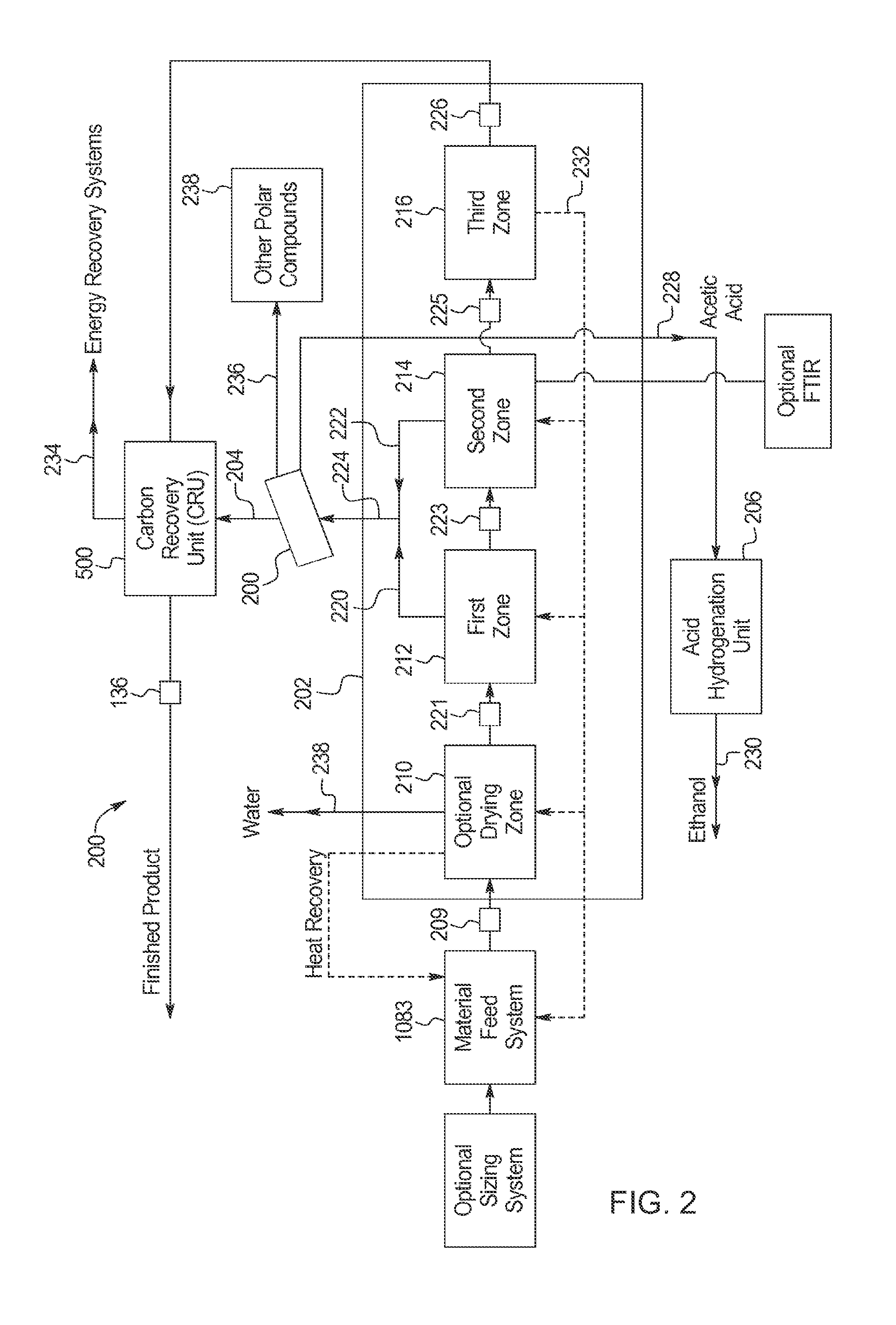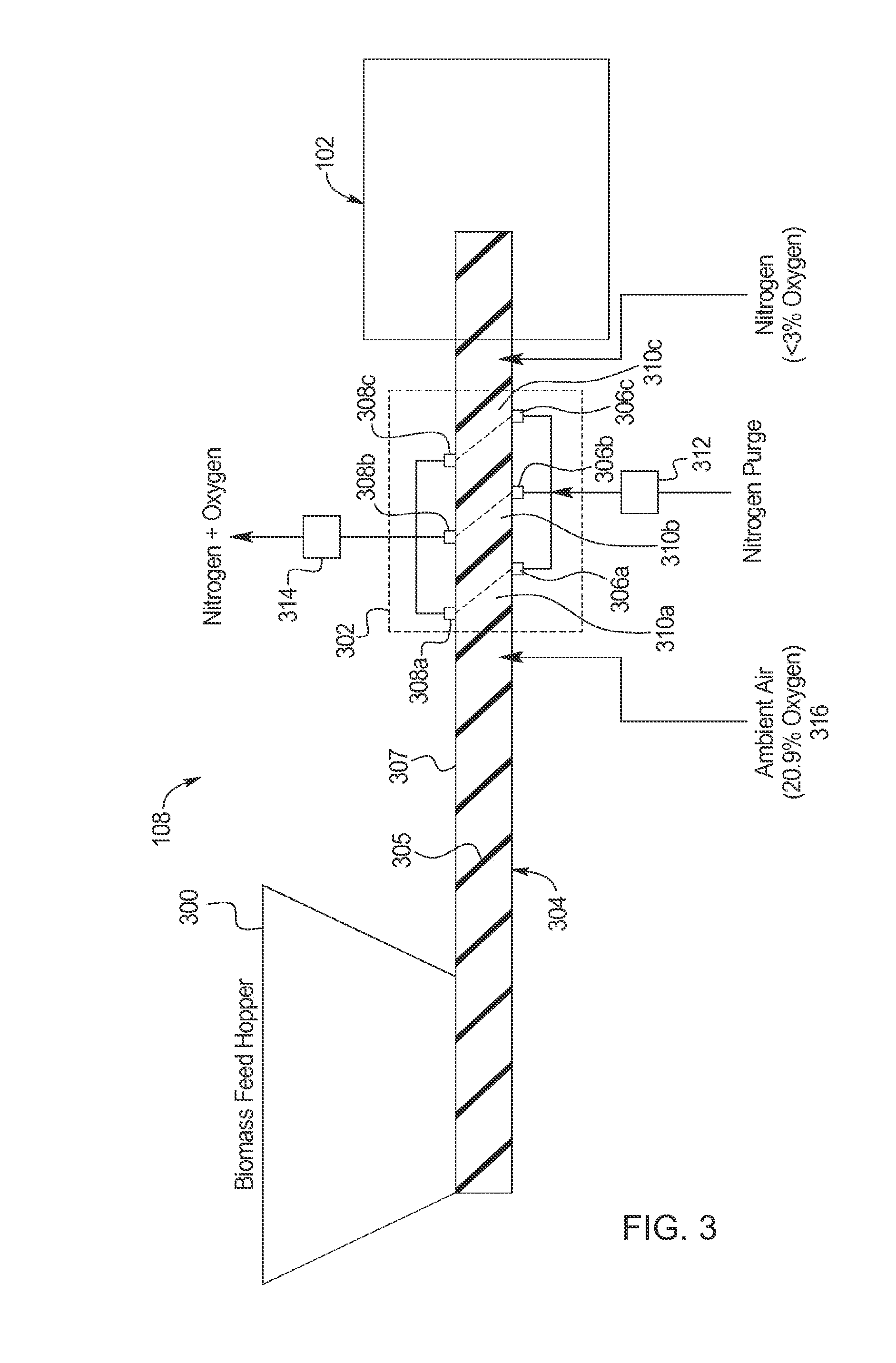Process for producing high-carbon biogenic reagents
a biogenic reagent and process technology, applied in chemical/physical processes, energy input, energy-based wastewater treatment, etc., can solve the problems of high energy consumption, high cost, and environmental pollution of traditional charcoal-making technologies, and achieve the effect of increasing carbon content and/or energy conten
- Summary
- Abstract
- Description
- Claims
- Application Information
AI Technical Summary
Benefits of technology
Problems solved by technology
Method used
Image
Examples
example 1
Preparation of Biogenic Reagent—General Method
[0612]Wood substrate red pine large chips, Douglas fir cylinders (1.25-inch diameter pieces) and Douglas fir pieces (approximately 2 inches by 2 inches), were loaded into a loading hopper having an optionally heated nitrogen gas flow. Optionally, a 1% aqueous solution of an additive (e.g., NaOH and / or KOH) was applied by spray to the wood substrate while in the hopper or by soaking the biomass in the aqueous additive solution. Regardless of the application method, the additive solution was allowed to penetrate the biomass for 30 minutes before the biomass was dried. Once the reactor had reached the desired temperature, rotation of the reactor was initiated and the wood substrate was fed slowly by activating the material feed system. Average residence times in the heated portion of the reactor for each batch are indicated in Table 1. After exiting the heated portion of the reactor, the pyrolyzed material collected in a discharge hopper. A...
example 2
Analysis of Biogenic Reagent
[0614]Parameters of the biogenic reagents prepared according to the General Method of Example 1 were analyzed according to Table 2 below.
TABLE 2Methods Used to Analyze Biogenic Reagents.ParameterMethodMoisture (total)ASTM D3173Ash contentASTM D3174Volatile Matter contentASTM D3175Fixed Carbon content (by calculation)ASTM D3172Sulfur contentASTM D3177Heating Value (BTU per pound)ASTM D5865Carbon contentASTM D5373Hydrogen contentASTM D5373Nitrogen contentASTM D5373Oxygen content (by calculation)ASTM D3176
[0615]Results for Samples A through F, which were prepared without the use of additives, are shown in Table 3 below.
TABLE 3Characteristics of Biogenic Reagents A Through F.SampleABCDEFMoisture (wt. %)2.423.023.510.4780.8644.25Ash (wt. %)1.160.9170.8391.031.061.43Volatile Matter (wt. %)38.746.442.82.817.018.4Fixed Carbon (wt. %)57.749.452.995.781.076.0Sulfur (wt. %)ND†NDNDNDNDNDHeat Value (BTU / lb.)12,80712,45212,34614,70013,98313,313Carbon (wt. %)73.371.271....
example 3
Production of a High Heat Value Biogenic Reagent
[0617]This example demonstrates production of a biogenic reagent having a high heat value.
[0618]A feedstock comprising Douglas fir cylindrical pieces (1⅛″ diameter, approx. 1.5-inch lengths) was pyrolyzed according to the General Method of Example 1. The reactor was heated to 600° C. and the feedstock was pyrolyzed with a residence time of 30 minutes. After cooling, the resulting biogenic reagent was analyzed according to the methods described in Example 2. Results are shown in Table 5.
TABLE 5Analysis of High Heat Value Biogenic Reagent.ASTMAsh &ParameterMethodAs-ReceivedMoisture FreeMoisture FreeProximate AnalysisMoistureD31731.45 wt. %——(total)AshD31740.829 wt. % 0.841 wt. % —VolatileD31757.15 wt. %7.26 wt. %7.32 wt. %MatterFixedD317290.6 wt. %91.9 wt. %92.7 wt % CarbonSulfurD3177ND†NDNDHeat ValueD586514,942 BTU / lb15,162 BTU / lb15,291 BTU / lbUltimate AnalysisMoistureD31731.45 wt. %——(total)AshD31740.829 wt. % 0.841 wt. % —SulfurD3177ND...
PUM
| Property | Measurement | Unit |
|---|---|---|
| temperature | aaaaa | aaaaa |
| temperature | aaaaa | aaaaa |
| temperature | aaaaa | aaaaa |
Abstract
Description
Claims
Application Information
 Login to View More
Login to View More - R&D
- Intellectual Property
- Life Sciences
- Materials
- Tech Scout
- Unparalleled Data Quality
- Higher Quality Content
- 60% Fewer Hallucinations
Browse by: Latest US Patents, China's latest patents, Technical Efficacy Thesaurus, Application Domain, Technology Topic, Popular Technical Reports.
© 2025 PatSnap. All rights reserved.Legal|Privacy policy|Modern Slavery Act Transparency Statement|Sitemap|About US| Contact US: help@patsnap.com



